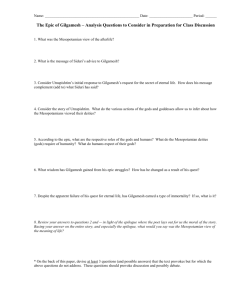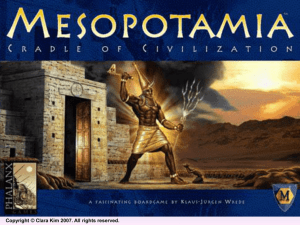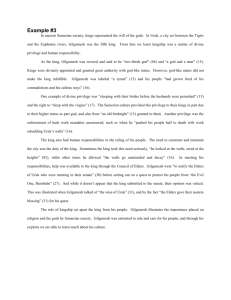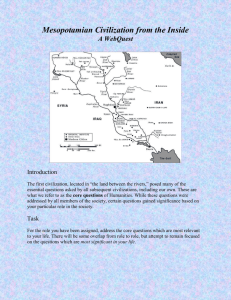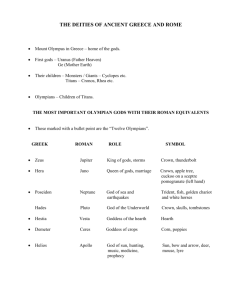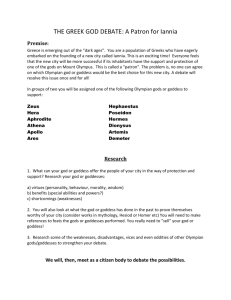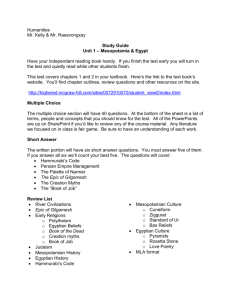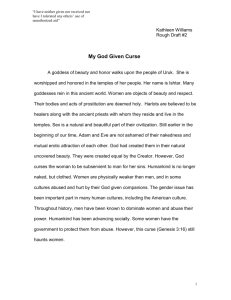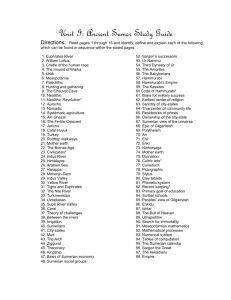The Gilgamesh narrative we have today came to us in fragments
advertisement
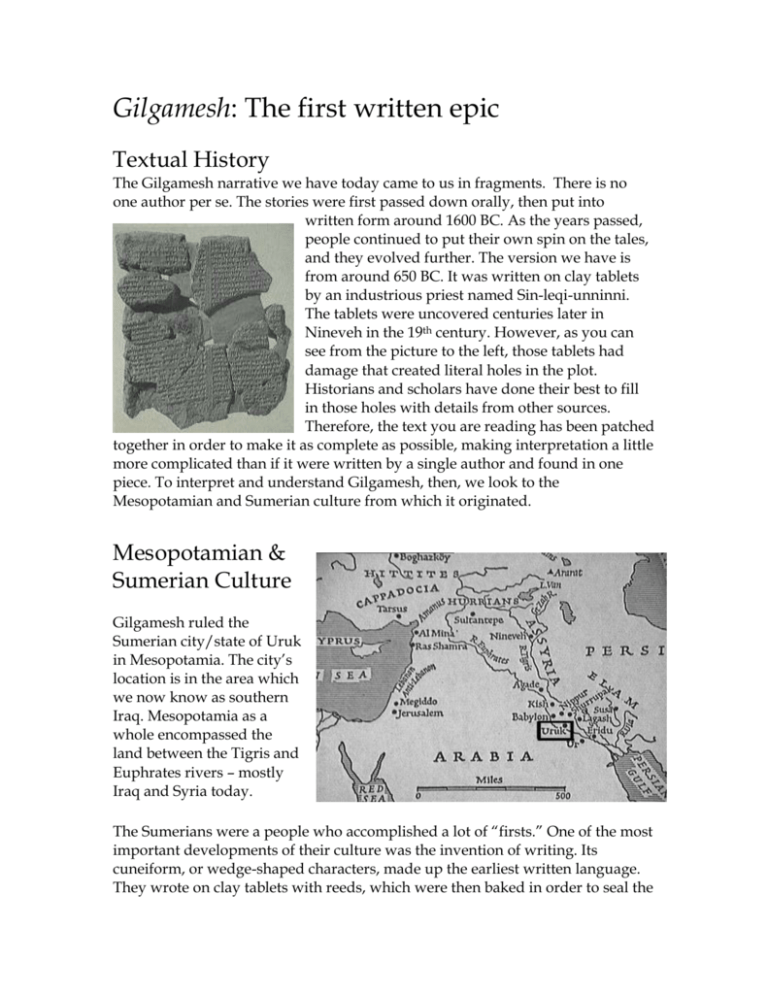
Gilgamesh: The first written epic Textual History The Gilgamesh narrative we have today came to us in fragments. There is no one author per se. The stories were first passed down orally, then put into written form around 1600 BC. As the years passed, people continued to put their own spin on the tales, and they evolved further. The version we have is from around 650 BC. It was written on clay tablets by an industrious priest named Sin-leqi-unninni. The tablets were uncovered centuries later in Nineveh in the 19th century. However, as you can see from the picture to the left, those tablets had damage that created literal holes in the plot. Historians and scholars have done their best to fill in those holes with details from other sources. Therefore, the text you are reading has been patched together in order to make it as complete as possible, making interpretation a little more complicated than if it were written by a single author and found in one piece. To interpret and understand Gilgamesh, then, we look to the Mesopotamian and Sumerian culture from which it originated. Mesopotamian & Sumerian Culture Gilgamesh ruled the Sumerian city/state of Uruk in Mesopotamia. The city’s location is in the area which we now know as southern Iraq. Mesopotamia as a whole encompassed the land between the Tigris and Euphrates rivers – mostly Iraq and Syria today. The Sumerians were a people who accomplished a lot of “firsts.” One of the most important developments of their culture was the invention of writing. Its cuneiform, or wedge-shaped characters, made up the earliest written language. They wrote on clay tablets with reeds, which were then baked in order to seal the writing. Canals, terraced temples called ziggurats, sailboats, wheels, plows, and beer were other famous inventions. Using the river, they had a prosperous shipping and trading industry. During Gilgamesh’s era in 2700 BC, city/states were beginning to grow and flourish, and continued to do so after his reign. The most powerful of the city/states in the area was considered the capital and its ruler the king. Gilgamesh was one such ruler, and became legendary. One of his most memorable accomplishments was the building of a wall around Uruk that was 18 feet thick. This is mentioned in the story as one of his lasting legacies. The growth of the city/state created a conflict with the old agrarian society – a conflict which never really went away. The tension between the city and the country informs the way nature and civilization are treated in the story. The Mesopotamian Religion Like many ancient cultures, the Mesopotamians worshipped a pantheon of gods and goddesses. These gods were immortal and treated humans as they saw fit, regardless of whether it was fair or right. Indeed, many of the gods are petty, fickle, and mean-spirited. All a Sumerian could do was show the gods respect, worship dutifully, sacrifice, plead for good luck or mercy, and hope for the best. There was a temple for a patron god or goddess in every large city. In Uruk, the patron goddess was Ishtar (pictured below). While appeasing the gods was originally mostly a priestly duty, it evolved into a kingly one as well. The patron god or goddess held the key to whether or not the city prospered, after all. What could be more political than that? Some important gods and goddesses: Adad – god of the storm Anu – father of the gods; ruled the sky Aruru – goddess of creation Ea – god of wisdom and artfulness; lived in the water Enlil – god of the elements Ereshkigal – queen of the underworld Ishtar – goddess of love, war, and fertility Ninsun – goddess of wisdom; Gilgamesh’s mother Shamash – the god of the sun, wisdom, and law; Gilgamesh’s patron god Siduri – goddess of alcohol, wine, and brewery Tammuz – god of fertility and agriculture

